Dongxin Chen
HFORD: High-Fidelity and Occlusion-Robust De-identification for Face Privacy Protection
Nov 15, 2023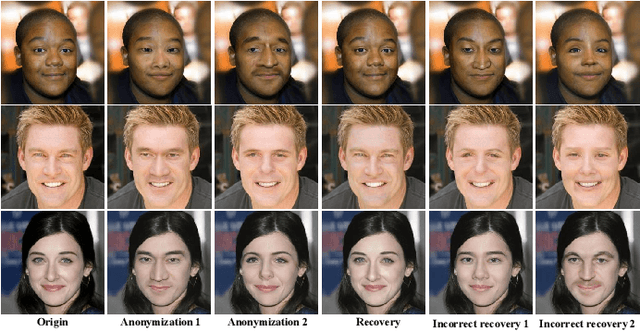
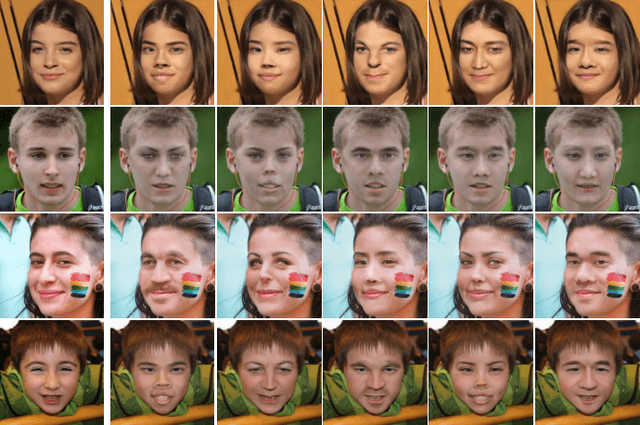
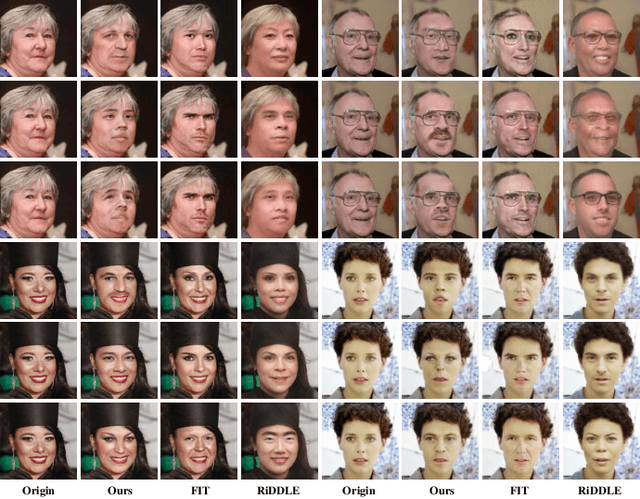
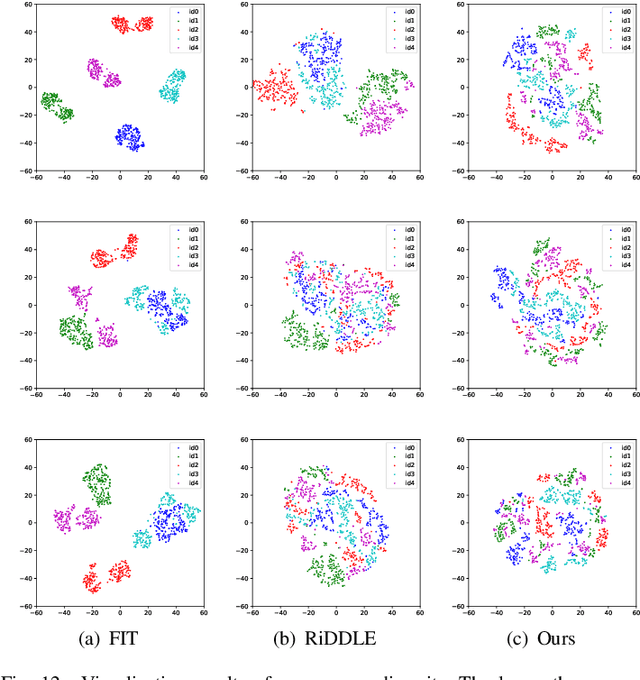
Abstract:With the popularity of smart devices and the development of computer vision technology, concerns about face privacy protection are growing. The face de-identification technique is a practical way to solve the identity protection problem. The existing facial de-identification methods have revealed several problems, including the impact on the realism of anonymized results when faced with occlusions and the inability to maintain identity-irrelevant details in anonymized results. We present a High-Fidelity and Occlusion-Robust De-identification (HFORD) method to deal with these issues. This approach can disentangle identities and attributes while preserving image-specific details such as background, facial features (e.g., wrinkles), and lighting, even in occluded scenes. To disentangle the latent codes in the GAN inversion space, we introduce an Identity Disentanglement Module (IDM). This module selects the latent codes that are closely related to the identity. It further separates the latent codes into identity-related codes and attribute-related codes, enabling the network to preserve attributes while only modifying the identity. To ensure the preservation of image details and enhance the network's robustness to occlusions, we propose an Attribute Retention Module (ARM). This module adaptively preserves identity-irrelevant details and facial occlusions and blends them into the generated results in a modulated manner. Extensive experiments show that our method has higher quality, better detail fidelity, and stronger occlusion robustness than other face de-identification methods.
Diff-Privacy: Diffusion-based Face Privacy Protection
Sep 11, 2023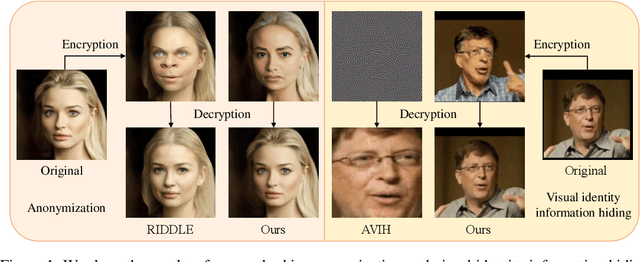
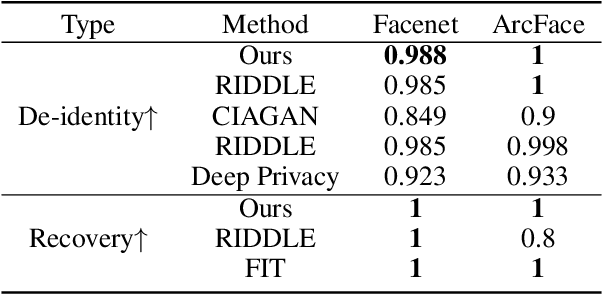


Abstract:Privacy protection has become a top priority as the proliferation of AI techniques has led to widespread collection and misuse of personal data. Anonymization and visual identity information hiding are two important facial privacy protection tasks that aim to remove identification characteristics from facial images at the human perception level. However, they have a significant difference in that the former aims to prevent the machine from recognizing correctly, while the latter needs to ensure the accuracy of machine recognition. Therefore, it is difficult to train a model to complete these two tasks simultaneously. In this paper, we unify the task of anonymization and visual identity information hiding and propose a novel face privacy protection method based on diffusion models, dubbed Diff-Privacy. Specifically, we train our proposed multi-scale image inversion module (MSI) to obtain a set of SDM format conditional embeddings of the original image. Based on the conditional embeddings, we design corresponding embedding scheduling strategies and construct different energy functions during the denoising process to achieve anonymization and visual identity information hiding. Extensive experiments have been conducted to validate the effectiveness of our proposed framework in protecting facial privacy.
 Add to Chrome
Add to Chrome Add to Firefox
Add to Firefox Add to Edge
Add to Edge